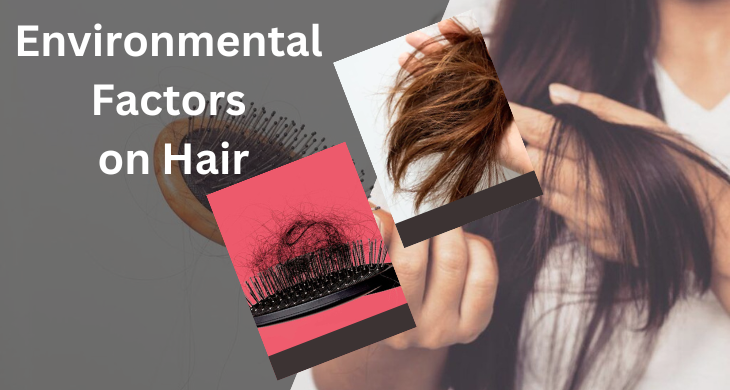The Impact of Environmental Factors on Hair: Understanding the Effects of Sunlight, Pollution, Humidity, and More

Introduction:
Our hair is constantly exposed to various environmental factors, that significantly influence its health and properties. Understanding the impact of sunlight, pollution, humidity, and other environmental conditions on our hair is crucial for maintaining vitality & beauty. This article will categorize hair based on these environmental factors and explore their effects on hair health.
Sunlight:
Exposure to sunlight can have both positive & negative effects on our hair. While sunlight provides essential vitamin D, excessive exposure to ultraviolet (UV) rays can lead to hair damage. UV rays can weaken the protein structure of the hair, resulting in dryness, color fading, and increased susceptibility to breakage. Protecting the hair with hats, scarves, or UV-protective products can help mitigate these effects.
Pollution:
Pollution, particularly in urban environments, poses a significant challenge to hair health. Airborne pollutants, such as dust, smoke, and chemicals, can accumulate on the hair, leading to dullness, dryness, and scalp issues. Regular cleansing and deep conditioning can help remove impurities & restore the hair’s vitality. Additionally, minimizing exposure to pollution through protective hairstyles or accessories can be beneficial.
Humidity:
Humidity levels play a crucial role in shaping hair behavior. High humidity can cause frizz and make hair appear unruly, while low humidity can result in dryness & static. Understanding the impact of humidity on hair can help individuals adapt their styling techniques and choose appropriate hair care products. Anti-frizz serums, moisturizing treatments, and protective hairstyles can be effective in managing humidity-related challenges.
Other Environmental Conditions:
Apart from sunlight, pollution, and humidity, various other environmental conditions can affect hair health. Extreme temperatures, saltwater, chlorine, and harsh winds are examples of factors that can impact the hair’s moisture balance, color vibrancy, and overall resilience. Taking preventive measures such as applying heat protectants, wearing protective styles, and using specialized shampoos can help mitigate these effects.
FAQs:
Q1: How does sunlight affect hair health?
A1: Sunlight can have both positive & negative effects on hair. While it provides essential vitamin D, excessive exposure to UV rays can weaken the hair’s protein structure, leading to dryness, color fading, and increased breakage.
Q2: What are the effects of pollution on hair?
A2: Pollution, such as dust, smoke & chemicals, can accumulate on the hair, resulting in dullness, dryness, and scalp issues. Regular cleansing and deep conditioning can help remove impurities and restore the hair’s vitality.
Q3: How does humidity impact hair?
A3: High humidity can cause frizz and unruliness, while low humidity can lead to dryness and static. Understanding the impact of humidity on hair can help individuals adapt their styling techniques and choose appropriate hair care products.
Q4: Are there other environmental factors that affect hair?
A4: Yes, apart from sunlight, pollution, and humidity, factors like extreme temperatures, saltwater, chlorine, and harsh winds can impact hair health. Using heat protectants, protective hairstyles, and specialized shampoos can help mitigate these effects.
Q5: Can environmental damage to hair be prevented?
A5: While complete prevention may not be possible, adopting protective measures such as wearing hats or scarves, using UV-protective products, and practicing regular cleansing & conditioning can minimize the impact of environmental damage on hair.
Q6: Can specific hair care products help combat environmental damage?
A6: Yes, using hair care products formulated to address the effects of environmental factors, such as anti pollution shampoos or humidity resistant styling products,can help protect and maintain hair health in challenging conditions.
Conclusion:
Categorizing hair based on environmental factors like sunlight, pollution, humidity & other conditions helps us understand the profound impact of our surroundings on hair health and properties. By recognizing these effects, we can make informed choices in our hair care routines and implement protective measures to maintain healthy and vibrant hair. Embracing a holistic approach to hair care that considers both internal and external factors will contribute to the long-term health and beauty of our hair.
